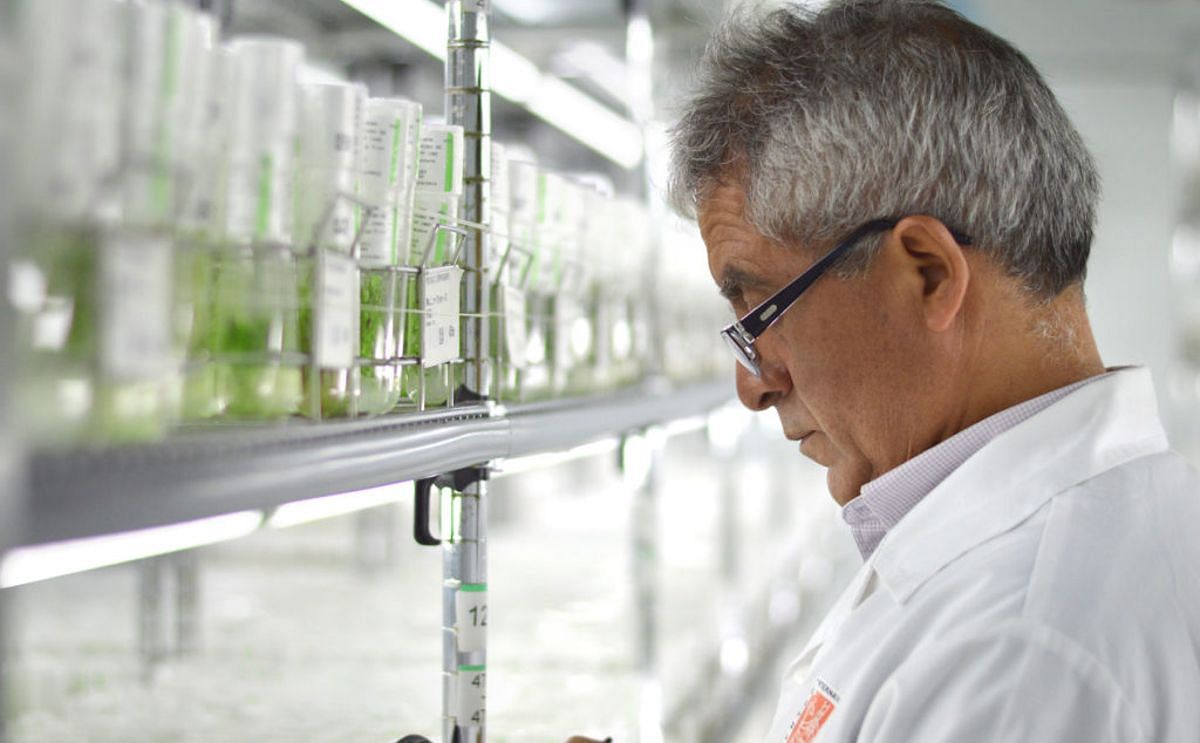主标签
International Potato Center: Environmental Health and Biodiversity

Environmental health and biodiversity
The unpredictable impacts of natural disasters, environmental threats, and a changing climate further threaten global food security. Conservation and use of crop genetic diversity offer options to face these challenges.
The CIP genebank drives efforts to conserve the world’s genetic diversity of potato and sweet potato for future use. It plays a critical role in facilitating the impact-oriented release of innovations and products.
In-situ and ex-situ conservation of genetic diversity is critical for preserving and monitoring changes in the world’s plant genetic resources. Lost genetic diversity would restrict our ability to enhance farmer resilience and produce enough nutritious food for the world.
The CIP genebank drives efforts to conserve the world’s genetic diversity of potato and sweet potato for future use. It plays a critical role in facilitating the impact-oriented release of innovations and products.
In-situ and ex-situ conservation of genetic diversity is critical for preserving and monitoring changes in the world’s plant genetic resources. Lost genetic diversity would restrict our ability to enhance farmer resilience and produce enough nutritious food for the world.
- CIP has created one of the world’s largest in-vitro genebanks, with more than 12,000 accessions of potato, sweet potato, and other Andean root and tuber crops, which comprise a treasure trove of traits that could be harnessed to address climate change challenges.
RNA virus detection technology has facilitated the detection and cleaning of materials for distribution of virus-free planting material across the globe since 2010 and CIP-developed training materials have helped build capacity in other agricultural institutions globally.
Every year, more than 5,000 samples of virus-free germplasm are sent to scientists around the world and another 2,700 virus-free native potato accessions are shared with indigenous Andean communities for cultivation and in-situ conversation. - Since 2010, CIP has made substantial strides in long-term agrobiodiversity conservation at its genebank through cryopreservation—preserving crop tissues in liquid nitrogen at -196 °C—which reduces the need for laborious and costly practices for the renovation of in-vitro accessions.
In just seven years, CIP built up the largest and world’s most diverse potato cryobank collection, which to date conserves more than 3,300 Andean potato landraces.
The cryopreservation protocol has been improved continuously, producing significant gains in the rewarming and recovery process of cryopreserved genetic material, with full plant recovery rates increasing from 58.2% to 71.6%. - While it is generally understood that genetic material from the CIP genebank has played an important role in the release of many improved varieties in developing countries, the economic contribution has rarely been quantified.
A 2020 study put the value of the Victoria potato variety to the Ugandan economy for the period 1991–2016 at USD 1 billion.
Scientists found that 72% of the economic benefits corresponding to the germplasm of Victoria were due to the CIP genebank contribution, confirming the magnitude of economic benefits generated using CIP germplasm in crop improvement.
These results show that the availability of diverse germplasm is perhaps one of the most important elements in varietal development.
Like to receive news like this by email? Join and Subscribe!
Get the latest potato industry news straight to your WhatsApp. Join the PotatoPro WhatsApp Community!
精选企业
Sponsored Content
Sponsored Content
Sponsored Content
Sponsored Content








